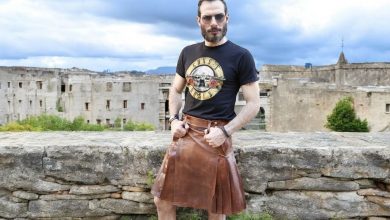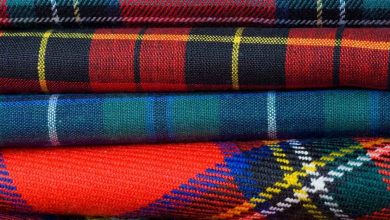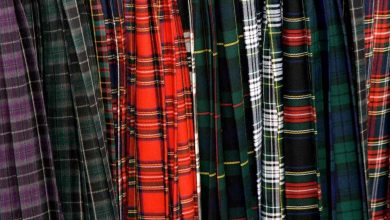Leather Kilts Caring to Keep it in Top Condition
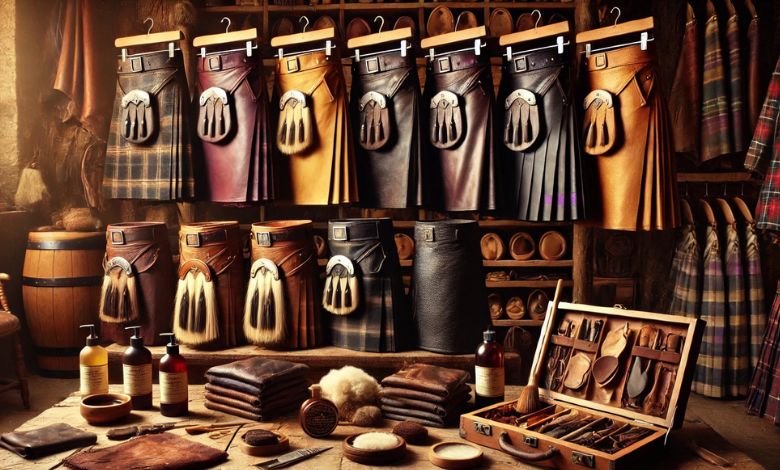
All kilt types, whether tartan, hybrid, utility, or leather, require proper care for increased longevity. Investing only in costly products is insufficient; all kilts must be looked after. This article discusses leather kilt care, covering everything from cleaning to storing it so the fabric is not damaged.
Leather Kilts Caring
Before we discuss the care tips, let us clarify that kilts are made with different types of leather, including full-grain, top-grain, cowhide, and exotic leather. Most look similar but have different features, while the care tips might also be the same. However, the quality of the fabric might require different degrees of maintenance. Let us start with the cleaning tips.
Tips to Clean Leather Kilts
Cleaning a leather kilt is possible with a damp cloth, but washing requires water. Washing leather kilts is not recommended since it is a complicated process. Be sure to use cold water and mild detergent since harsh chemicals can damage the leather through color bleeding and cracks. Even when cleaning the fabric, a better idea is to use chemicals, especially made for leather. Here is the simple cleaning process.
- Gently wipe the surface with a damp cloth, preferably a microfiber cloth.
- Use a mild soap solution or a dedicated leather cleaner rather than bleach or other harsh chemicals.
- Focus on spot cleaning and remove the visible stains only.
- Avoid soaking the leather during cleaning.
Properly Condition Kilts
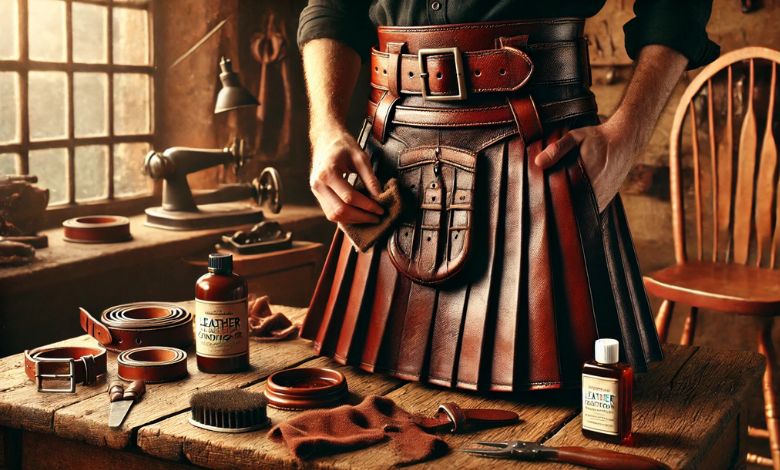
To condition a leather kilt, you can use a leather conditioner. Use the one that suits the leather type you are to condition. If your kilt gets wet, blot it with a clean cloth or paper towel and let it dry naturally. Avoid placing it near heat or direct sunlight. Here are some simple tips to properly condition the fabric.
- Apply a small amount of conditioner to a soft, clean cloth.
- Gently rub the conditioner into the leather in circles.
- Let the conditioner absorb into the leather for a few hours.
- Buff the leather with a clean cloth to restore its shine and suppleness.
Dry Leather Kilts Carefully
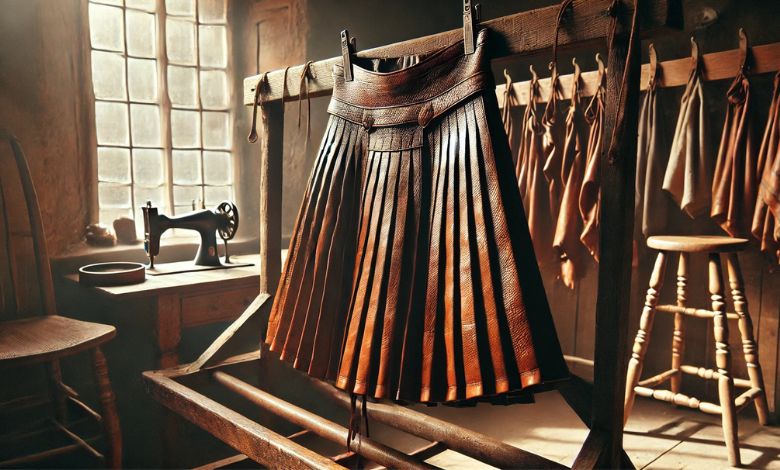
Like prohibiting hot water, keeping the leather from hot air is essential. That’s why experts do not recommend using a machine to dry this kilt. Hot air can shrink the material, cause cracks, and damage the overall appearance of the kilt. The best suggestion is to go with natural air drying, hanging it in a ventilated area. Here is the simple process to air dry the garment.
- Before you hang it for drying, gently remove as much water as possible without twisting the fabric.
- Now, spread the kilt on a clean, dry towel, and the surface must be flat. Make sure that it is laid out in its natural shape and that the pleats are in their position.
- Alternatively, one can place the kilt on a drying rack, again making sure it’s positioned correctly if the ventilated area is unavailable.
- Remember that air drying can take several hours or even days, depending on the thickness of the leather and the humidity of the environment. So, keep patience and let it dry.
Store Them Properly
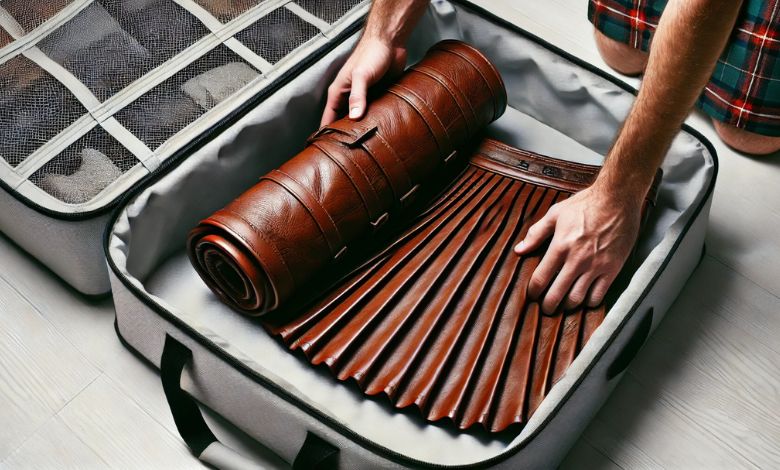
The last and foremost process to keep a leather kilt in top condition is to store it properly according to its protocols. The leather kilts can avoid shrinkage, binding, and colour fading by staying in a proper shape while not worn. Here is the simple process:
- Start at the bottom of the kilt. Carefully roll the kilt towards the waistband, ensuring the pleats stay in place.
- Put the rolled-up kilt in a breathable storage bag or container and store it in a cool and dry place.
- Store the bag on flat surfaces, which offer enough room for breathability. Similarly, it is good to hang them to hold their correct shape.
Difference Between Leather and Traditional Kilt Caring
If we compare the process of caring for leather kilts and other traditional kilts, we note some similarities and differences. The requirements are different as well. Moreover, cleaning a leather kilt is mentioned above, and we will discuss traditional kilt care here. Then, we will overview a graph describing the difference.
- To maintain the condition of a traditional kilt, it is necessary to clean it properly.
- Go for dry cleaning rather than washing it. If washing is still essential, I prefer removing stains to washing the entire apparel.
- If you have no option other than washing the kilt, do not use a machine; go for a hand wash using cold water.
- Choose air drying instead of machine dryers to maintain the charm of the attire.
- The better idea is not to iron the kilt, in case it is essential. Set it to the low setting.
- Hang the kilt in proper storage so the wrinkles may not affect their appearance.
| Aspect | Leather Kilts | Traditional Kilts |
| Cleaning | Wipe with damp cloth or use a mild soap solution or leather cleaner. Spot clean only. Avoid soaking. | Prefer dry cleaning; if necessary, hand wash with cold water. Avoid machine washing. |
| Drying | Air dry the fabric naturally by hanging in a ventilated area. Avoid hot air or machine drying to prevent damage. | Air dry naturally; do not use a machine dryer. |
| Conditioning | Apply leather conditioner to maintain suppleness and prevent cracking. | |
| Ironing | Not recommended | Iron only on low heat if necessary. |
| Storage | Roll kilt with pleats intact and store in a breathable bag or container in a cool, dry place. | Hang the kilt properly to avoid wrinkles. Ensure proper storage to maintain shape. |
| Damage Prevention | Avoid harsh chemicals, hot air, and direct heat. Use a dedicated leather cleaner. | Avoid machine washing and excessive wrinkling. |
The Utility Kilt” Ultimate Destination for Leather Kilts
Investing in high-quality products is ideal to minimize the efforts you apply to maintaining and caring for your leather kilts. Nevertheless, premium-quality products might not be affordable for everyone. But there is no need to worry because The Utility Kilts provides exceptionally made leather kilts at very affordable prices. Not only the quality with price, but we also offer expertly customized kilts while keeping the value of time in mind.

